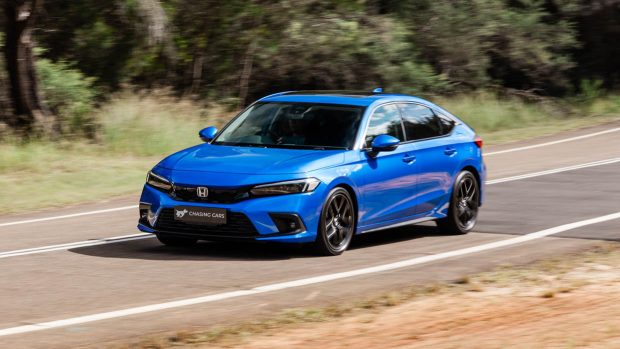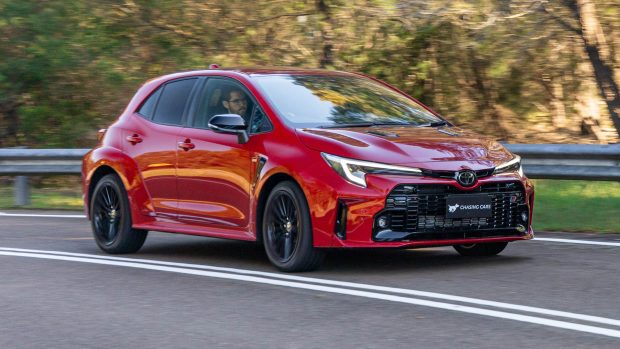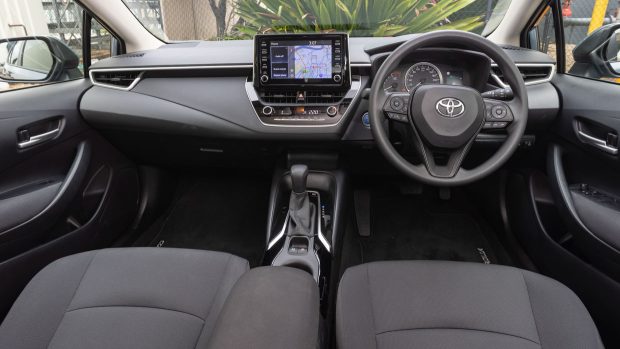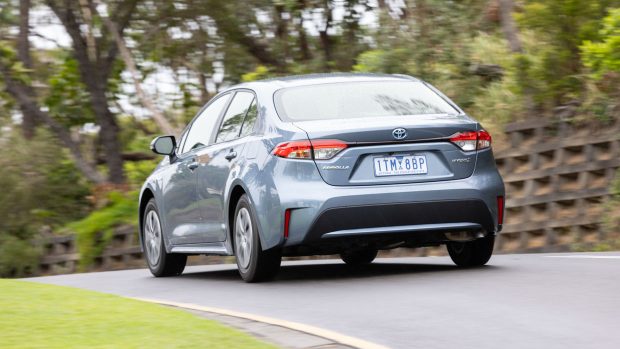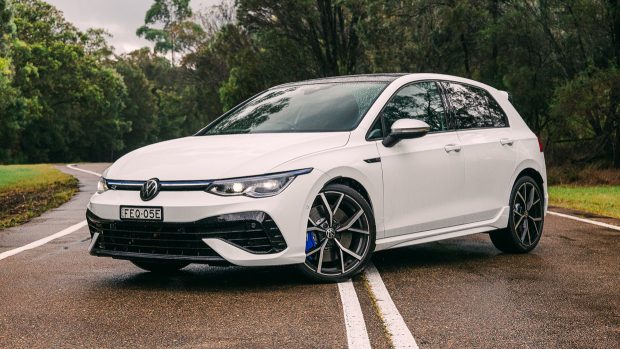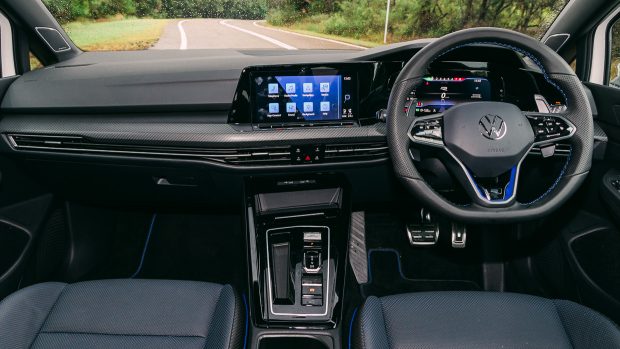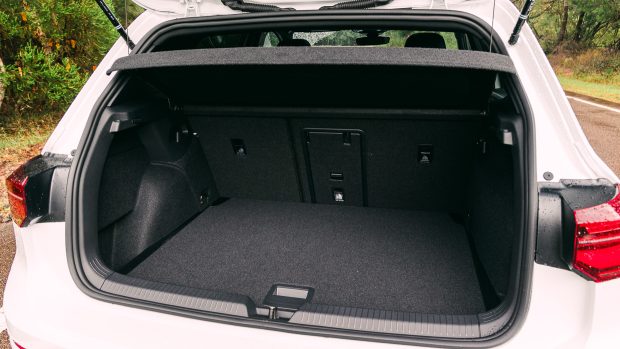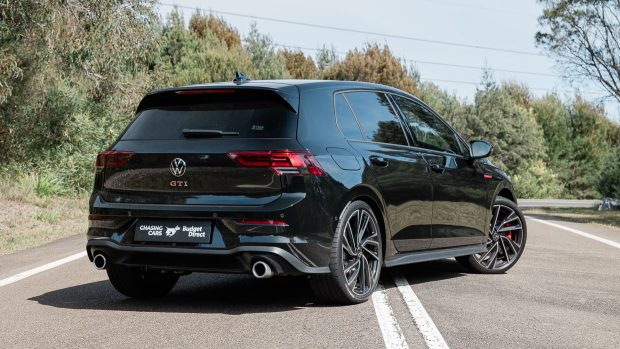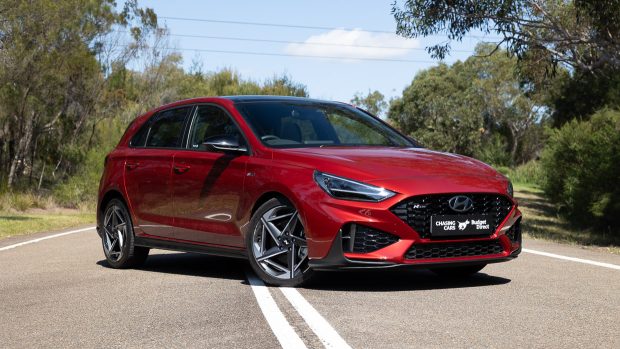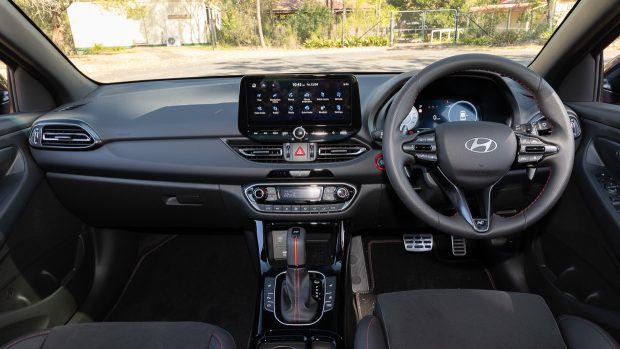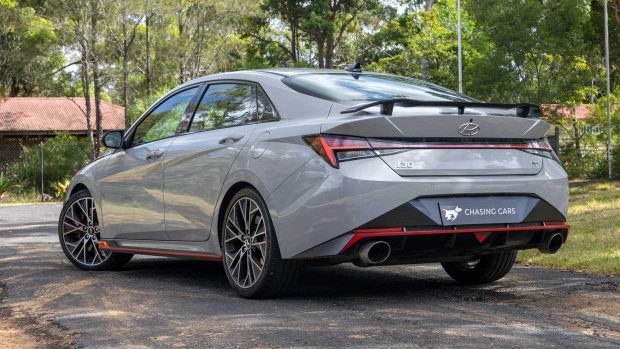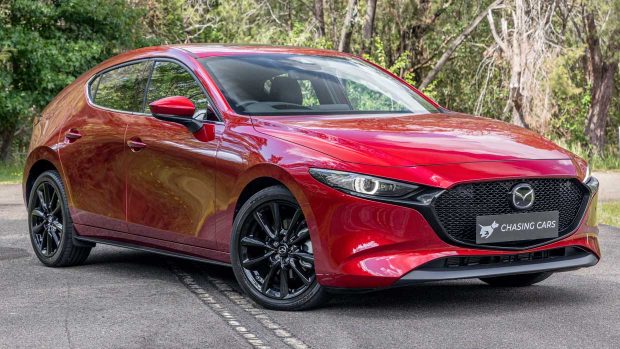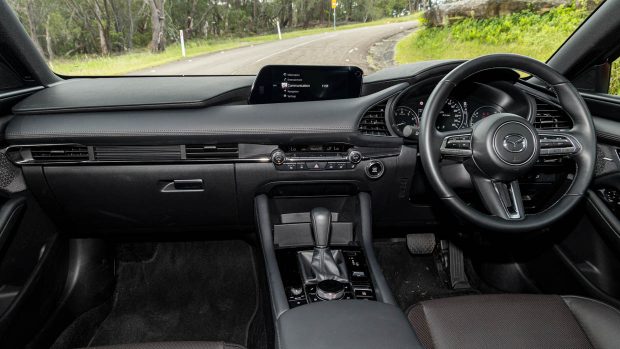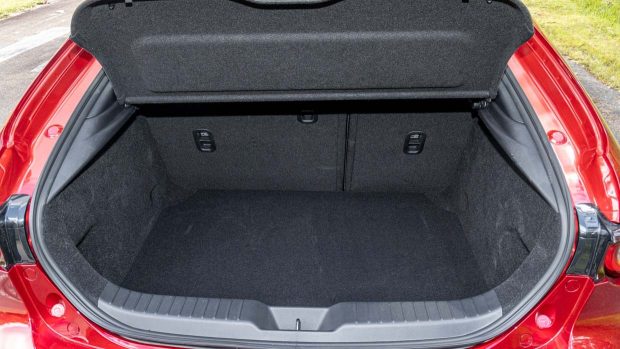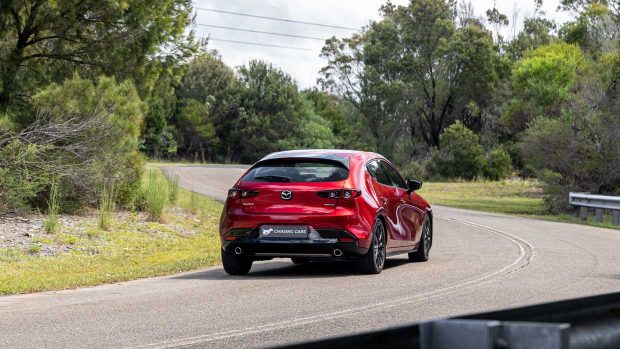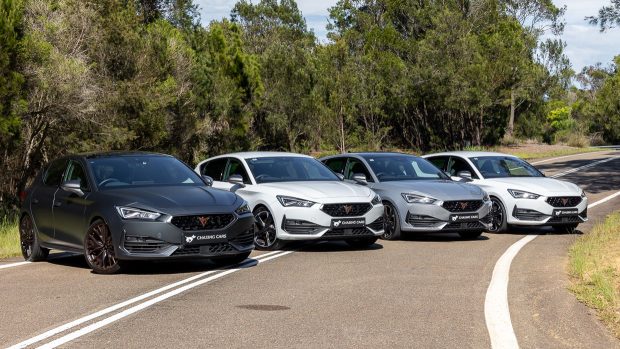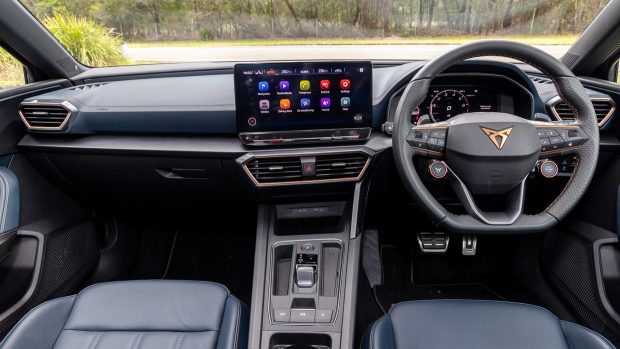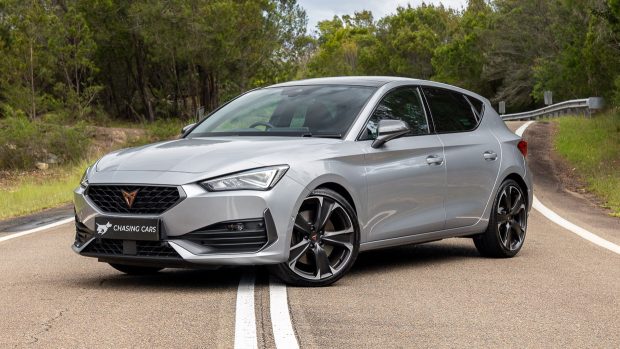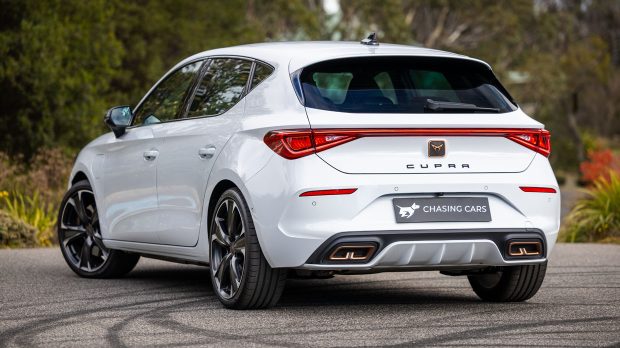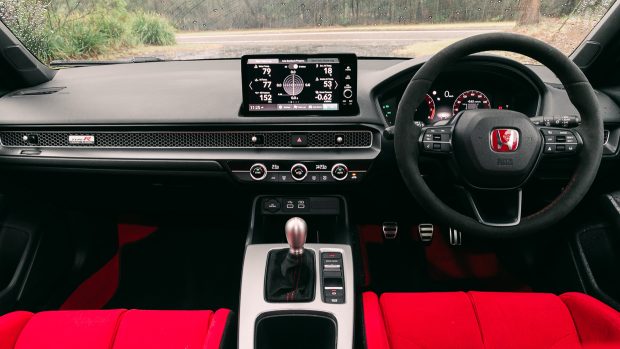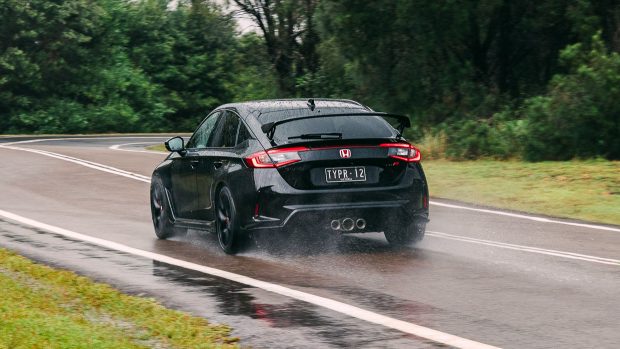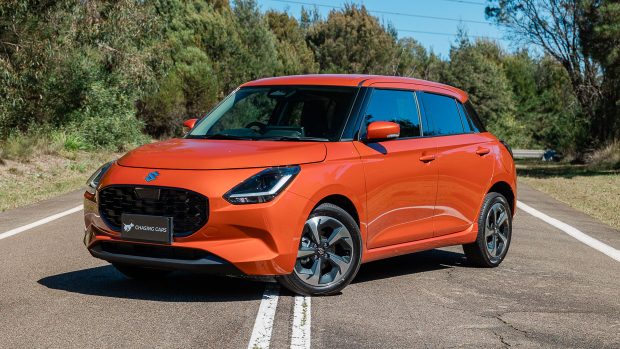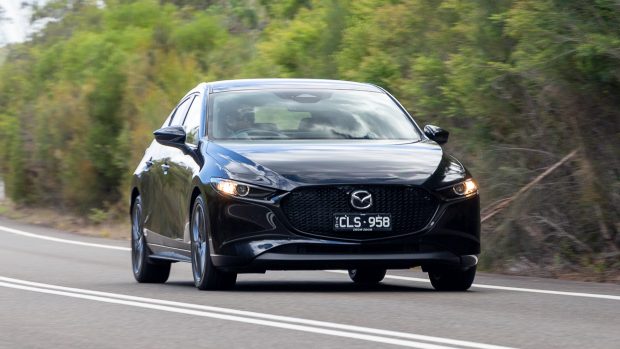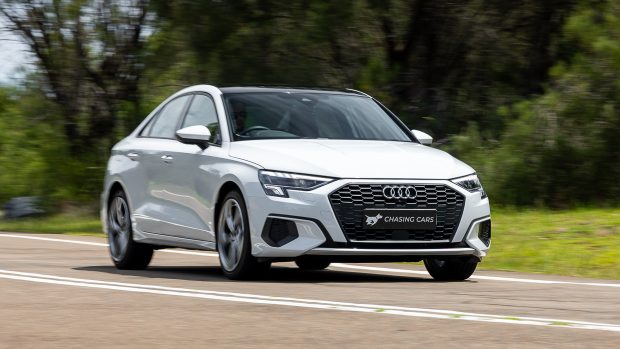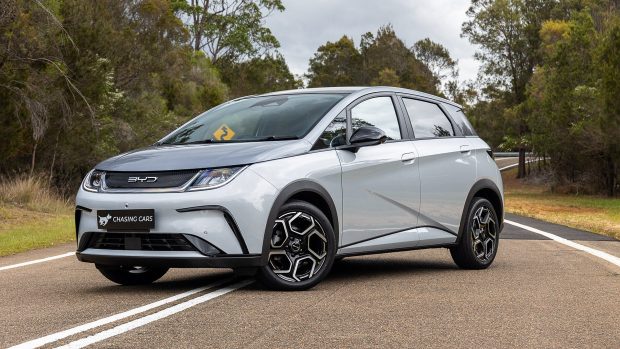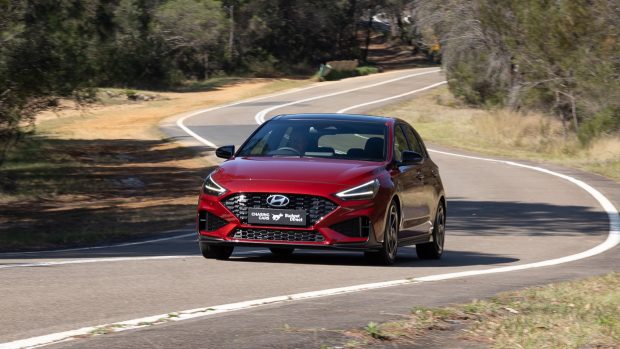-
Car Reviews
- All reviews
- Midsize SUVs
- Small cars
- Utes
- Small SUVs
- Large SUVs
- Large cars
- Sports SUVs
- Sports cars
- Vans
Latest reviews
- Car News
-
Car Comparisons
Latest comparisons
- Chasing Deals
Don’t know what new small car to buy? Here are some good options to choose from and some key aspects to think about while doing so
Despite the meteoric rise of SUVs, small hatchbacks and sedans remain a popular choice. Generations of Australians have grown up with longstanding names like Toyota Corolla and Honda Civic, their size bringing practical passenger and boot space, while a variety of grades offer everything from budget runarounds to performance specials.
Many car brands have ditched low-specification small cars, responding to the market’s demand for better equipment, safety and economy, driving prices higher. We’ve broken down our top picks and why you should – or shouldn’t – buy them, and also reflect on the best prestige, budget and safest small car choices.
First, let’s consider what you want in a new small car. Here are five of the most important factors you’ll need to think about:
The Toyota Corolla’s the best-selling car of all time. The nameplate’s been around since 1966, and it’s been a trusted small car around the globe for generations. For Australians, it represents a practical and affordable small car with strong reputation for reliability.
Long considered rather dull and boring, today’s Corolla line-up includes a blistering high performance GR hatchback to go with more sedate petrol and petrol-hybrid offerings.
The five-door hatchback’s the popular choice, but a four-door sedan with larger boot and rear seat space is also available, and the two body types are priced almost identically.
Entry-level versions of each remain just under $30,000 before on-road costs, while opting for the more efficient – and hugely popular – hybrid versions add roughly $2500 extra to the bill.
Ignoring the ‘hot hatch’ GR Corolla, there are three grades to choose from: Ascent Sport, SX and ZR, with each available with choice of 126kW/202Nm 2.0L four-cylinder petrol, or 72kW/142Nm 1.8L four-cylinder petrol-hybrid allied with a small battery and electric motor. All feature a CVT automatic gearbox; only the GR comes with manual transmission.
It’s not hard to see why the hybrid’s the popular choice. Its combined economy of from 3.5L/100km is outstanding, while it runs at low speeds or in traffic using only the electric motor, returning a money-saving 3.4L/100km during urban use. The normal petrol’s 6.0L/100km and 7.6L/100km respective figures simply can’t compete.
The hatchback’s exterior styling is more dynamic than the conservative sedan’s, but the hatch’s poor rear seat space and tiny boot mean it can’t rival the four-door for passenger-carrying practicality.
The bones of the cabin are sound and user-friendly, but lack any wow factor. The Ascent Sport’s plastic steering wheel and fabric seats feel cheap, while door and dash plastics even in higher grades can’t compete with plusher rivals.
But all are comfortable, and Toyota’s ensured technology and safety is strong range-wide. There are some confusing variances between hatchbacks, sedans and hybrids, but included are an 8.0-inch touchscreen, alloy wheels and Toyota’s smart Connected Services.
A five-star ANCAP vehicle, all have advanced autonomous emergency braking (AEB), traffic sign recognition, lane departure warning and lane keep assist, but you need the SX or ZR for a fuller suite.
Despite the Corolla’s sensible reputation, the current model is surprisingly fun to drive, with light, easy steering, neat cornering skills and composed ride in town and on highways. The Hybrid is the more enjoyable with swifter acceleration to go with its better economy.
Learn more about the Toyota Corolla by reading our in-depth reviews, covering the Ascent Sport, ZR, GR, hybrids and more.
The Volkswagen Golf closely rivals Toyota’s Corolla for staying power; this enduring Volkswagen model first introduced in 1974. Its European roots sees it enjoy a marginally more premium reputation beside small car rivals, reflected in the Golf’s higher pricing.
After over half a century of building and perfecting Golfs, these Volkswagens are classy all-rounders. Stylish, spacious, strong yet economical engines, classy cabins and a superb drive experience equals a talented package.
Volkswagen’s bulging SUV range has seen the Golf’s many body styles trimmed. No longer will you find a wagon, convertible or three-door hatch, the range now consisting only of five-door hatchbacks.
Following the market trend, the entry-level Golf has high specification and high price – $39,190 before on-roads – with a more basic, budget grade no longer offered.
A 110TSI Life opens the range, with a higher-specification 110TSI R-Line above. Both use the same 110kW/250Nm turbo petrol engine with eight-speed automatic gearbox, with a manual no longer offered.
Legendary performance variants – the Golf GTI and Golf R – are the other two options. These use turbocharged 2.0L engines; the GTI with 180kW/370Nm and front-wheel drive, the R 235kW/400Nm and all-wheel drive. Both use a seven-speed dual-clutch (DSG) automatic.
Interiors are spacious and wonderfully laid out, with ample comfortable space for rear passengers, plus a well-sized boot.
The Golf’s higher price is reflected in generous inclusions. The Life and R-Line both have digital driver displays and large 10-inch touchscreens with navigation. There’s wireless phone charging, three-zone climate control, keyless access and ambient lighting.
The R-Line adds sportier suspension, seats and styling, while moving into the GTI and R brings advanced chassis mechanicals to go with high performance engines for a thrilling drive.
Generous safety equipment helped the Golf achieve a five-star ANCAP rating in 2022. Included are nine airbags, autonomous emergency braking (AEB), blind spot monitor, rear traffic alert, junction assist and adaptive cruise control.
Some over-fussy cabin controls let down an otherwise near-faultless driving experience. Roomy enough for families, refined and rewarding to drive and at-home on highways and in town.
Ownership costs – especially dealer servicing – are expensive, but the 110TSI engine returns a reasonable 5.8L/100km. For now, there are no more economical hybrid engines offered.
Learn more about the Volkswagen Golf by reading our in-depth reviews, covering the base model, GTI and R.
The Korean all-rounder’s done a superb job shaking up the small car establishment.
Available as a five-door hatchback and four-door sedan, variants range from budget to economical hybrid to talented performance ‘N’ models.
But the hatchback is currently in transition. Production has moved from Korea to Europe, and from the second half of 2024, Australia will receive only high-specification N-Line and performance N versions, priced from a not-cheap $36,000 before on-roads. Previously, hatchbacks were sold from just $24,000.
The i30 sedan – with hard-to-miss edgy styling – has more options: Base, Elite, N-Line, Premium and N-Line Premium, plus the rapid N model.
Garden variety engine is a 110kW/180Nm 2.0L petrol with CVT automatic returning 6.1L/100km. N-Lines use a much zestier 150kW/265Nm 1.6L turbo petrol with seven-speed dual clutch auto, and full-fat ‘N’ cars a 206kW/392Nm 2.0L turbo petrol with six-speed manual or eight-speed dual clutch auto transmissions.
Latest addition is the i30 sedan hybrid – a genuine challenger to Toyota’s dominant Corolla hybrid. The Hyundai’s 104kW/265Nm (combined) 1.6L petrol hybrid returns an excellent and accurate 3.9L/100km.
It runs on battery and electric motor only at low speed, making it a superb economical pick for urban users. A non-hybrid i30 sedan uses around three times as much fuel in town.
The i30 is smooth, quiet and easy to drive but with solid ride control and balance for more enthusiastic drivers. Rear seat space and giant boot (474L) for the class make it family friendly.
The cabins are overly plain with hard plastics in places, but layout’s excellent and there’s strong inclusions such as 8.0-inch infotainment, digital driver display and wireless phone charger.
Elite and Premium grades enjoy leather, heated and ventilated seats, 10.25-inch infotainment, surround view monitor and auto boot. N-Lines add a body kit and sportier suspension.
Safety equipment is solid with advanced Autonomous Emergency Braking, driver attention warning, speed limit assist, lane keep and radar cruise control, but Hyundai’s systems are particularly nannying. No ANCAP rating for the sedan is a black mark, while the hatchback’s expires in 2024.
The i30 N is arguably the best all-round hot hatch/hot sedan on sale today, with rapid performance, engaging chassis and fun at its core.
Learn more about the Hyundai i30 by reading our in-depth reviews, including the hybrid sedan, N-Line and thrilling N models.
Another model that’s chalked up almost 50 years in Australia, the Mazda 3 (formerly 323) has been a first car and family staple here since 1977.
The current generation arrived in 2019, but remains a standout in terms of smooth design, quality cabin and rewarding drive experience.
The ‘3’ has seen plenty of price rises, specification changes and a simplification of model grades since its introduction, but remains available as a five-door hatchback and four-door sedan.
No longer offered with a manual gearbox, all Mazda 3s use a six-speed automatic. Engines are non-turbo petrols, with choice between a 114kW/200Nm 2.0L and 139kW/252Nm 2.5L, returning 5.9L/100km and 6.6L/100km respectively.
The hatchback wins praise for its sleek styling, albeit at the expense of some rear visibility and space – both the rear seats and 295L boot are very small, and ideally better suited to those not regularly carrying back seat passengers.
The sedan is the pick for those requiring more cabin space, while its 444L boot makes it the practical pick.
Numerous grades are offered, with specification and price – from $30,470 – climbing accordingly. Models are Pure, Evolve, Touring, Evolve SP, GT and flagship Astina, available in both hatch and sedan.
Even the entry-level Mazda 3’s interior has an upmarket feel, with most touch points and the unfussy design exuding class, albeit feeling a bit dated today.
Included is an 8.8-inch infotainment screen, head-up display, sat nav, part-digital instrument cluster and push button start.
Evolves add climate control, rear air vents, paddle shifters and 18-inch alloys, while Touring grades and above enjoy power leather seats, wireless charging and wireless smartphone mirroring. G25 GT grade and above get 10.25-inch infotainment, while Astinas enjoy a glass sunroof, Bose audio and more advanced safety.
All have Autonomous Emergency Braking, blind spot monitor, driver attention alert and adaptive cruise control. A $2000 Vision Pack adds 360-degree monitor, front-cross traffic assist and driver monitor to non-Astinas.
There are better small car choices for families, but for the keener driver with an eye for style, the Mazda 3 is tough to beat. It’s quiet, easy to drive and with a playful side in corners. It’s the most European feeling of the non-Euro choices.
No properly economical hybrid engine spoils the party, and Mazda’s non-turbo engines feel a tad old-hat these days.
Learn more about the Mazda 3 by reading our in-depth reviews, including the G25 Evolve, Astina and GT models, plus the G20 Evolve hatch.
The disruptor brand, but this Spanish spinoff is from the reassuringly established Volkswagen Group. There’s just a bit more youthful fiesta offered than more traditional small cars.
The Cupra Leon’s only been in Australia a few years, but has already found favour. They feel similar to a Volkswagen Golf’s layout and size, but with a less conservative finish.
Designed to be sportier, performance-orientated and exclusive, all are five-door hatchbacks and come in V, V Tribe Edition, VZ and VZx grades. All use a 2.0L turbo petrol engine, but performance depends on grade.
The V has 140kW/320Nm, the VZ 180kW/370Nm and hot VZx 221kW/400Nm. A VZe hybrid is also offered with 1.4L turbo petrol and electric motor – combining for 180kW/400Nm – while in 2025 a Leon Sportstourer wagon arrives. All use a dual-clutch auto gearbox.
Specification’s generous to justify the prices, which start at a chunky $45,190. Leon V buyers get 18-inch alloys, LED lights, 10.25-inch digital driver display, 12-inch infotainment screen, sat-nav, wireless charging, paddle shifters, bucket seats and tri-zone climate control.
The VZ adds 19-inch alloys and VZx a body kit, quad exhaust, blue dashboard and blue leather bucket seats (heated and memory), and a Beats sound system.
Showing it’s aimed at keen drivers rather than retirees, all feature Dynamic Chassis Control to adjust suspension to your required mood and road, while touches like fake carbon fibre weave, flat-bottom steering wheel and bronze flourishes ups the raciness.
But it’s practical with roomy rear seats and a deep boot, although the hybrid version’s battery pack eats into this.
Safety, too, is good with advanced Autonomous Emergency Braking, adaptive cruise control, blind spot warning, lane keep assist and rear cross traffic alert. But it can be too invasive, and Cupra’s reliance on controlling things like climate through a touchscreen is distracting.
All have a sporting bent to their drive, with rorty exhaust notes to match. The Leon V is tamest, but moving up the range these hatches get properly hot, with the VZx a rapid and sharp machine, albeit with a firm ride in town.
Learn more about the Cupra Leon by reading our in-depth reviews, including the V, VZx and soon-arriving Sportstourer wagon.
After over 50 years on sale in Australia, the Civic’s nowhere near the force it once was. Not because it’s a bad car – far from it – but Honda’s removed budget versions from its line-up, leaving only high-specification and performance models.
This means sales have plunged; a travesty as this new-generation Civic, launched in 2022, has an excellent interior design and generous cabin space to go with handsome, mature exterior styling.
It’s also one of the best small cars to drive and incredibly cheap to service.
Only available as a hatchback, the pricey entry-level VTi-LX is $47,200 drive-away. Its 1.5L turbo petrol engine offers 131kW/240Nm for eager performance, mated to a CVT auto gearbox, while the steering, ride control and bump absorption are up there with best-in-class.
A 134kW/315Nm hybrid version called e-HEV LX is pricier again, but returns a pleasing 4.2L/100km versus the non-hybrid’s 6.3L/100km. Bigger gains are seen in urban driving, where the hybrid proves its fuel-saving brilliance with 2.0L/100km versus 8.0L/100km.
The iconic Civic Type R is an engineering marvel and one of history’s greatest hot hatches, but they now cost well over $70,000.
The ‘normal’ Civics are richly specified with 18-inch wheels, power and heated leatherette seats, 9-inch touchscreen, digital instrument display, wireless charging and Bose audio. The hybrid adds a panoramic sunroof.
Generous rear space impresses, while the boot with its false floor offers an excellent 449L. No spare wheel – just a repair kit – is a negative.
The Type R’s a different animal, with red bucket seats, manual gearbox, adaptive suspension and giant brakes.
All versions are standout in the small car field, but their high price and no cheaper version means few buyers can afford them.
Learn more about the Honda Civic by reading our in-depth reviews, including the VTi-LX and hybrid.
A few short years ago small cars under $20,000 were commonplace. No longer. Car brands have stopped offering ‘bare-bones’ models, and advanced safety and non-negotiable technology like touchscreens and smartphone mirroring add costs. Many long-serving models have abandoned the small car space.
Of those remaining, the recently refreshed Suzuki Swift is the pick of the cheapies. Priced from $24,490 drive-away, it’s smaller than many rivals, but many thousands of dollars cheaper.
It’s basic with five-speed manual gearbox, steel wheels, simple seats and hard cabin plastics, but goodies like 9.0-inch touchscreen, navigation and keyless start are big attractions.
Safety across all Swift grades is good with auto emergency braking (AEB), adaptive cruise control, lane departure warning and traffic sign recognition, but no ANCAP rating and disappointing three star Euro NCAP safety result raises questions.
Incredibly economical at 4.0L/100km thanks to a mild hybrid three-cylinder engine and the Swift being very lightweight, and it’s a pleasing little car to punt through town, and with just enough space for two adults in the back.
It’s tempting to classify the ‘safest car’ as the one with the most comprehensive driver assist. While such systems are very important, accidents can and do still happen, so how well the car’s crash structure holds up is vital.
The Mazda 3, when crash tested by ANCAP in 2019, scored a top-of-class 98 per cent for Adult Occupant Protection, and near-top 89 per cent for Child Occupant Protection.
Included safety is generous from the entry-level Pure model, and unlike other car brands, owners can optionally upgrade their safety to the level of higher grade Mazda 3s – $2000 buys a pack which includes 360-degree monitor, front cross traffic alert and driver monitor to go with the standard blind spot monitor, AEB, lane keep assist, speed sign recognition and rear cross traffic alert.
The only negative is no central airbag from its total of seven airbags – something that would be punished under ANCAP’s stricter testing protocols of today.
Audi offers its A3 small car model in sedan and Sportback (hatch) guises, and engines to suit all tastes. Both are available as a hot S3 or sizzling hot RS3 with Audi’s legendary quattro all-wheel-drive.
The facelifted A3 lands in Australia in early 2025, with the RS3 given a broader window of the first half of the year, all are sure to build on an already excellent package.
The entry-level A3 35 TFSI’s a pathway to premium for just over $50,000, which buys a sharp-looking all-rounder with a cabin oozing class along with decent equipment.
Rivals are few – the BMW 1 Series, Mini Hatch and Mercedes-Benz A-Class are all that remain.
The basic A3 shares its platform and much of its mechanicals with Volkswagen’s Golf, making it easy, fun and rewarding to drive, while returning excellent fuel economy.
If you’re shopping for a small car, the good news is there remains many car brands still selling in this ‘bread and butter’ segment.
A disappointing change in recent years is the removal by most of cheap entry-level cars, as the demand for better safety, technology and inclusions inevitably push prices higher.
That means new pure electric cars entering the small car space are often similarly priced to petrol and hybrid offerings. The BYD Dolphin and MG4 are EV alternatives for under $50,000.
But the biggest draw away from small cars is the small SUV segment. While many are very good cars, it’s a misconception to believe these SUVs offer greater practicality. In fact, they’re often the same chassis and engine as cheaper small cars, but with slightly higher, different shape bodies.
If you can handle a smaller hatchback, the recently-launched new Suzuki Swift is a solid budget choice, but it can’t compete with others on this list for safety nor space.
All on our list impress in their own ways, with the Toyota Corolla and Mazda 3 strong choices for those not needing a lot of cabin and boot room. The more generous interiors of the VW Golf, Hyundai i30 and Honda Civic make them better for families.
All offer quality drive experiences, but many buyers are now prioritising running costs over all, making hybrids increasingly desirable. The Corolla, i30 and Civic are the picks here.
High specification and strong safety is a given in the small car class today, so anyone upgrading from anything over five years old will be wowed by the advances.
SUVs may be the default choice for most, but it’s silly to overlook the often cheaper and better-to-drive small hatchbacks and sedans on offer.
Latest comparisons
About Chasing cars
Chasing Cars reviews are 100% independent.
Because we are powered by Budget Direct Insurance, we don’t receive advertising or sales revenue from car manufacturers.
We’re truly independent – giving you Australia’s best car reviews.
